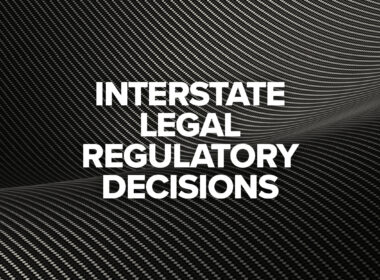Lawyers are a curious and inventive species that are quick to note developments in the world of technology and how new ideas may be used to enhance the provision of legal services.
The phrase Artificial Intelligence or ‘AI’ is commonly referred to with a mixture of curiosity and disbelief, coupled with fear and the desire to harness a new technology.
These emotions are only natural when confronted with the unknown and need to be addressed within the context of our professional and ethical obligations.
Definitions of AI focus upon the “science and engineering concerned with making machines work in an intelligent way that mimics the problem solving and decision-making capabilities of the human mind.”[1]
Many may consider this process to be in competition with the methodical, diligent and talented skills we have demonstrated as lawyers in the past and are now suggested by many commentators to be replaced or altered using AI.
It is necessary to reassure the legal profession that the ‘soft skills’ that we have will always prove to be the deciding factor when providing a quality legal service and that these cannot be replaced by an application of AI.
Now more than ever the legal attributes of curiosity, forensic judgement and a sense of humor become increasingly important when appraising the worth of any new technology.
Current guidelines on professional and ethical obligations
Understanding how generative AI can assist in legal practice, as well as its limits, risks and shortcomings, are imperative. Overall, ‘integrity and professional independence’ must always be maintained when using any type of AI.
The forensic judgment of a solicitor must be displayed at all times. The need for accuracy and interpreting information when using AI must always be with an awareness of the lack of critical thinking by AI. A solicitor is ultimately responsible for every piece of legal work he or she creates in the course of legal practice.
Before using AI, a solicitor should have regard to the following:
- Understanding the limitations of the technology, for example, accuracy of information generated.
- Developing internal policies and risk-management systems to minimise problems and identify errors.
- Checking sources and ensuring documents are compliant with relevant legislation.
- Designing checking mechanisms that will address the shortcomings of using AI.
- Addressing intellectual property issues, such as who owns data and conflicts between the client and the use of the data base; and
- Ensuring privacy and data security.
After using AI, a solicitor must also understand the ongoing problems that may arise:
- Where ongoing testing of generative AI may be required to ensure accuracy.
- Records and cross checking of files to ensure the integrity of computer systems and the confidentiality of client information.
- Training of staff to ensure compliance with confidentiality and understanding the limitations of using AI programs.
- Evaluate limitations and quality of work provided in legal service.
- Clearly identify and adopt the work as that of the solicitor and not rely on automated systems for communication with client and external stakeholders.
Use of generative AI in Court proceedings
There is an added level of care needed when using AI in any Court proceedings. The duties to the Court are paramount and ensuring compliance with requirements of frankness and ensuring the integrity of evidence in all proceedings being mandatory.[2]
Every practitioner has an obligation to be aware of the limits, risks and shortcomings of using generative AI in Court proceedings. These may include:
- Hallucinations, which are inaccurate and fictitious citations that may be included in submissions created using AI programs. The use of such submissions, where the solicitor has failed to check the accuracy of their content, have been found to have misled the Court and be liable for disciplinary action.[3]
- The nature of bias on created documents and submissions using underlying data sets that are incomplete and have a tendency to harvest particular material that creates a document.
- Confidentiality of information that arises from proceedings and legal professional privilege that is inadvertently waived by disclosure. The nature of AI absorbs information and builds a database that may be used in other matters by separate users of the AI program, thereby revealing confidential information and ‘letting the cat out of the bag’ by its operational use.
- The breach of Court orders regarding the prohibition of publication or use of information subject to non-publication or suppression orders. This may also include the undertaking not to use information produced under compulsion for any extraneous purpose without leave from the Court.[4] This may include material produced on subpoena or any material by statutory prohibition. Such material must not be entered into any Gen AI program. Affidavits, witness statements or other evidentiary material should not be created using AI or for the alteration, embellishment or changes of the content of affidavits or any witness statements.
- If AI is used for any other purpose, there must be a disclosure statement of ‘non-use’ to ensure that the Court and parties are fully aware of what role AI may have played in document preparation to ensure the integrity of proceedings and evidence. Using AI for ‘mere preparatory work’ may be permissible but must be limited and not affect any affidavit or witness statement.[5] Only in rare circumstances, leave of the Court may be granted but obtained in advance.[6]
The future and issues arising
With any change that is contemplated in legal practice, technological or otherwise, solicitors are reminded of the basic principles of our professional ethics. These principles provide the requisite guidance to safely transit these boundaries.
Solicitors’ rules are not only used for discipline but to protect and guide the lawyer to professional conduct that may be used to justify decisions made in everyday practice.[7] As we enter a new phase of technology, the professional standards that we have adhered to continue to be the silver threads of hope and guidance that we must rely on to give effect to the proper administration of justice.
It is worth noting that with every technological change, upheaval of circumstance and evolution of legal practice, our professional ethics have provided the means of survival.
Good luck to you all.
Paul Monaghan is a Senior Ethics Solicitor at The Law Society of NSW.
[1] A Solicitor’s guide to responsible use of Artificial Intelligence, LSJ Online Nov 14 2023.
[2] Supreme Court of NSW, Supreme Court Practice Note SC GEN 23 – Use of Generative Artificial Intelligence (GEN AI) of 28 January 2025 to commence on 03 February 2025.
[3] Handa v Mallack [2024] FedCFamCF 957 (19 July 2024) – false citations and Rule 19 of Legal Profession Uniform Law Australian Solicitors’ Conduct Rules – Duty to the Court – not mislead or deceive
[4] Supreme Court of NSW(n2) Paragraph 9A (Harman principle).
[5] Supreme Court of NSW(n2) Paragraph 10.
[6] Supreme Court of NSW(n2) Paragraphs 11 to 15.
[7] Refer to the full version of the Legal Profession Uniform Law Australian Solicitors’ Conduct Rules – Rule 2 on the Purpose the Solicitors’ Conduct Rules https://www.legislation.nsw.gov.au/#/view/regulation/2015/244/part2/divadvocacyan/rule2




